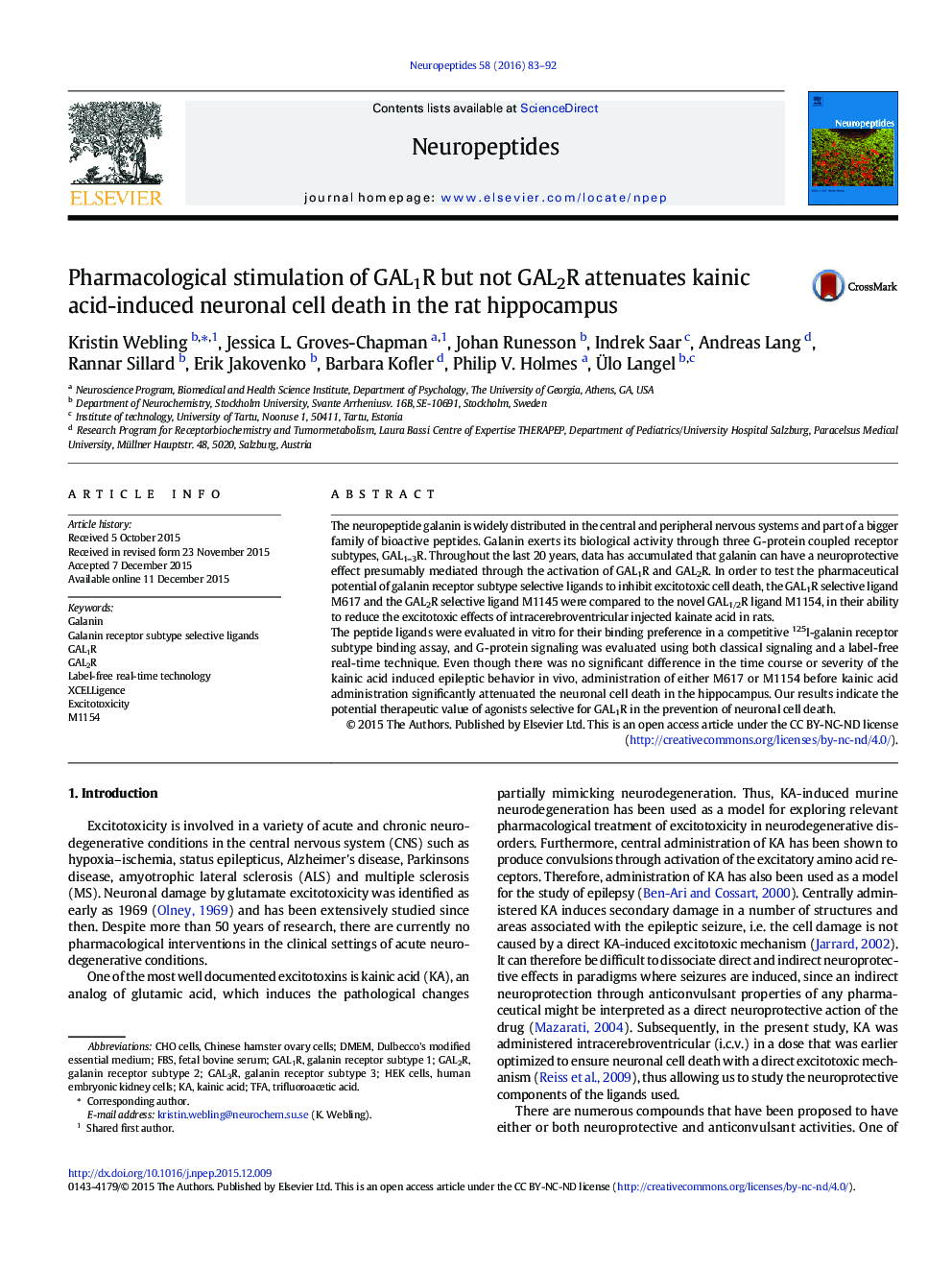| Article ID | Journal | Published Year | Pages | File Type |
|---|---|---|---|---|
| 5904065 | Neuropeptides | 2016 | 10 Pages |
â¢A new protocol for evaluating novel GPCR ligands using real-time impedance based technology showed similar or slightly lower EC50 values when compared to previously published galanin ligandsâ¢M1154, a novel GAL1/2R selective agonist was designed and its ability to significantly reduce the excitotoxicity of i.c.v. administered KA was evaluated.â¢Our data indicate, that M617 (GAL1R selective ligand) and M1154 (GAL1/2R selective ligand), but not M1145 (GAL2R selective ligand), significantly reduced neuronal cell death, in the KA-excitoxicity model.â¢Our findings suggest that the neuroprotective effect of pharmacological stimulation of galanin receptors in vivo after I.c.v. administration of KA in the CA3 region is mediated through GAL1R.
The neuropeptide galanin is widely distributed in the central and peripheral nervous systems and part of a bigger family of bioactive peptides. Galanin exerts its biological activity through three G-protein coupled receptor subtypes, GAL1-3R. Throughout the last 20Â years, data has accumulated that galanin can have a neuroprotective effect presumably mediated through the activation of GAL1R and GAL2R. In order to test the pharmaceutical potential of galanin receptor subtype selective ligands to inhibit excitotoxic cell death, the GAL1R selective ligand M617 and the GAL2R selective ligand M1145 were compared to the novel GAL1/2R ligand M1154, in their ability to reduce the excitotoxic effects of intracerebroventricular injected kainate acid in rats.The peptide ligands were evaluated in vitro for their binding preference in a competitive 125I-galanin receptor subtype binding assay, and G-protein signaling was evaluated using both classical signaling and a label-free real-time technique. Even though there was no significant difference in the time course or severity of the kainic acid induced epileptic behavior in vivo, administration of either M617 or M1154 before kainic acid administration significantly attenuated the neuronal cell death in the hippocampus. Our results indicate the potential therapeutic value of agonists selective for GAL1R in the prevention of neuronal cell death.
Graphical abstractDownload high-res image (129KB)Download full-size image
